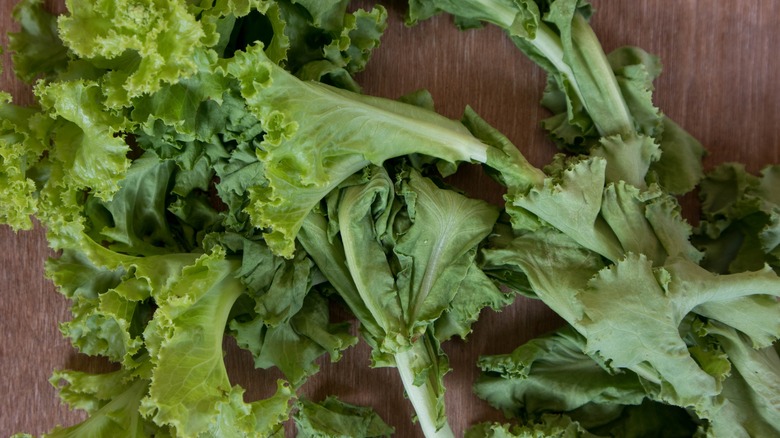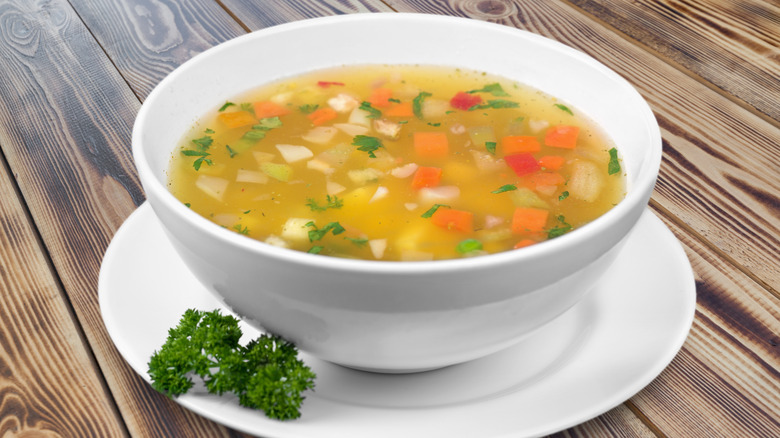Why You Should Stop Throwing Out Wilted Vegetables
Being wasteful with food is a major issue around the globe. In the U.S. alone, food waste per year for a family of four averages $1,500, according to Rubicon. Those numbers are from 2020, and with the rising cost of groceries, reducing our food waste may become a more pressing issue. Still, despite careful planning and buying only what you know you'll use, it can still happen.
For instance, few things can be as frustrating as opening the fridge to find that your produce has wilted. And as much as you may try to save money and not waste food, nothing is as unappealing as putting together a salad made from soggy, wilted greens. However, instead of tossing wilted produce, there are a number of methods that you can use to either revive it to something that resembles its former glory, or you can repurpose it into another recipe that will prevent food waste.
Giving wilted veggies a new life
According to Chicago's Food Bank, you can revive wilted lettuce or other greens by submerging them in ice water for five to 10 minutes, then placing them in a salad spinner and spinning until dry. For other vegetables with stalks like asparagus, broccoli, and herbs, Eating Well advocates a similar method, by first trimming the ends and placing those wilted vegetables in a vase or jar of water for up to 30 minutes, then pat dry before using.
If for some reason, you're unable to revive wilted vegetables, think in terms of repurposing them. That may look like using them in a recipe that will hide their sogginess, like adding them to a soup, as reported by The Seattle Times. Baking, roasting, or sautéing wilted vegetables will also give new life to aging produce. As outlined in a Food Matters article featuring 10 recipes for using wilted produce, you can also add sautéed wilted veggies to numerous recipes including scrambled eggs or a frittata.

